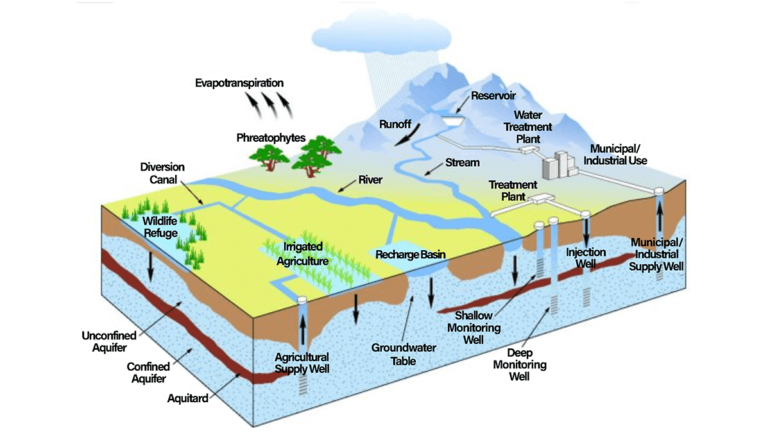A large part of the world’s liquid freshwater supply comes from groundwater. These underground reservoirs of water—which are stored in soil and aquifers—feed streams, sustain agricultural lands, and provide drinking water to hundreds of millions of people.
For that reason, researchers are keen to understand how quickly surface water replenishes, or “recharges,” groundwater stores. But measuring a vast, fluid, underground resource is easier said than done. A new study by Wouter Berghuijs and colleagues published in the journal Geophysical Research Letters found that recharge rates might double previous estimates.
The research team produced an updated model of groundwater recharge using a recent global synthesis of regional groundwater measurements. They found that a single factor, climate aridity, accurately estimated how much precipitation trickled into groundwater across the globe: Arid locations had lower recharge rates than humid ones. The aridity-based model results closely mirrored field measurements and indicated that previous models vastly underestimated recharge rates.
This finding has implications for the water cycle, the authors say. For instance, groundwater likely contributes more to river flow and plant water use than previous models predicted. That could scale up to affect the entire ecosystem.
Although groundwater might recharge more quickly than expected, the team cautions that groundwater is still overused in many places, especially in arid regions. Groundwater depletion threatens water security in these areas, they say, and the impacts of climate change remain unknown.
More information:
Wouter R. Berghuijs et al, Global Recharge Data Set Indicates Strengthened Groundwater Connection to Surface Fluxes, Geophysical Research Letters (2022). DOI: 10.1029/2022GL099010
This story is republished courtesy of Eos, hosted by the American Geophysical Union. Read the original story here.
Citation:
Groundwater replenishes much faster than scientists previously thought (2022, December 21)



